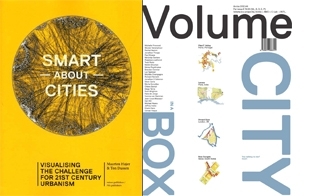Arjen Oosterman - A SMARTER CITY
WHAT CITY?
In the competition between cities, smart is the latest craze. We've passed the ‘creative class’ stage and moved into all sorts of smartness – a notion that ranges from city-wide abundant use of hi tech means (to monitor, control and connect), to more holistic interpretations. What is a smart city today, which way or ways are we going with this ambition to create smart cities, and what are today’s trends?
The conversation is arranged in collaboration with VGTU Faculty of Architecture.

Arjen Oosterman is a critic, educator and curator. With a background in architectural history he is editor-in-chief of Volume magazine (since 2007). The Volume project continues Archis, magazine for Architecture, City and Visual Culture and its predecessors since 1929. Other protagonists in this project are AMO and the Columbia Laboratory for Architectural Broadcasting. Being also part of Volume’s publisher Archis, he is engaged in several projects of Archis, among them the Self Building Building project (with partners), Connected (with four cities in Europe) and Architecture of Peace, a long term research project on architecture’s potential to contribute to stability and peace in post-conflict situations.He wrote, edited and contributed to books on contemporary Dutch architects and architecture, contributed to Dutch television documentaries, was member of juries and awards.

The current discourse on urban planning is imbued with the concept of the smart city. The smart city is based on innovative urban planning, which itself is based on smart technologies that not only make cities safer and cleaner, but also (and especially) more efficient. But is this actually making cities any better? In the book 'Smart about Cities. visualizing the challenge for 21st century urbanism', Maarten Hajer and Ton Dassen (PBL) argue for ‘smart urban planning’, thereby providing a counterweight to the uncritical embrace of the smart city.
VOLUME #34: CITY IN A BOX
With the exponential growth of urban populations, thousands of new towns and city extensions will be needed in the near future. While governments are seemingly in retreat, the private sector has stepped in to fill the gap. Private-sector development is nothing new, but scale and ambition are on the rise. Single companies now vie to build entire cities, and package their services so that their product can be replicated elsewhere. To tackle this complexity – of building whole cities from scratch – new organizational models are being drafted, financial tools invented, and the dynamic between client, investor, developer, designer, builder, and end-user is fundamentally shifting.
